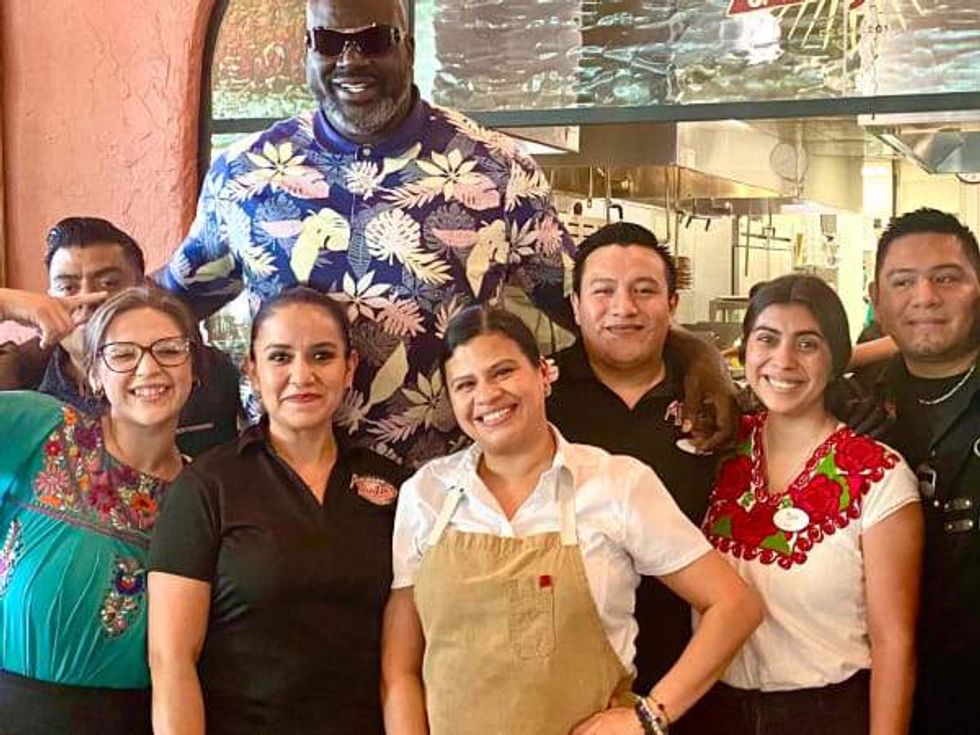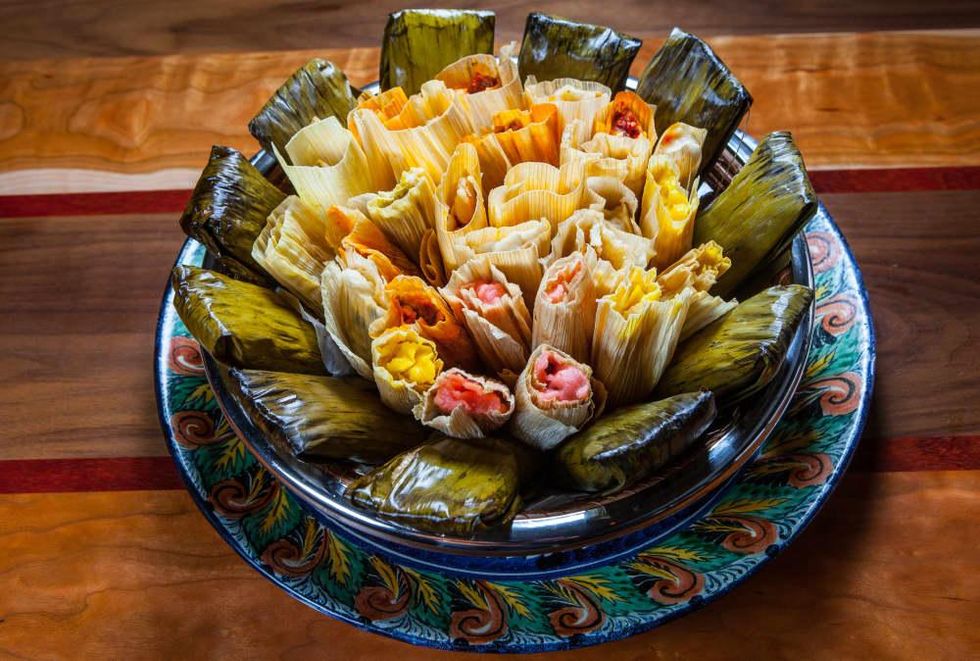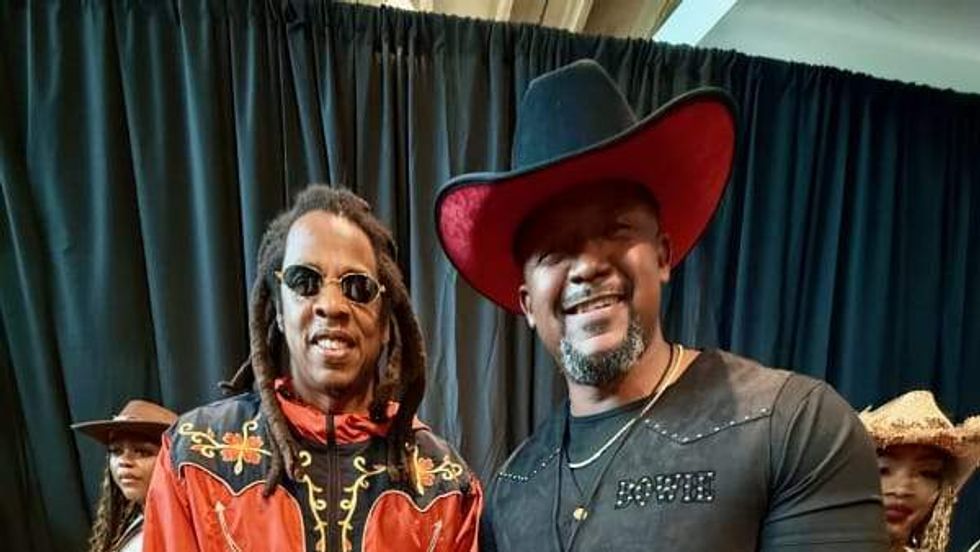Seth and Hori's excellent adventure
Star Houston chefs behind hot new restaurant dish on their ultimate insider food trip to Japan
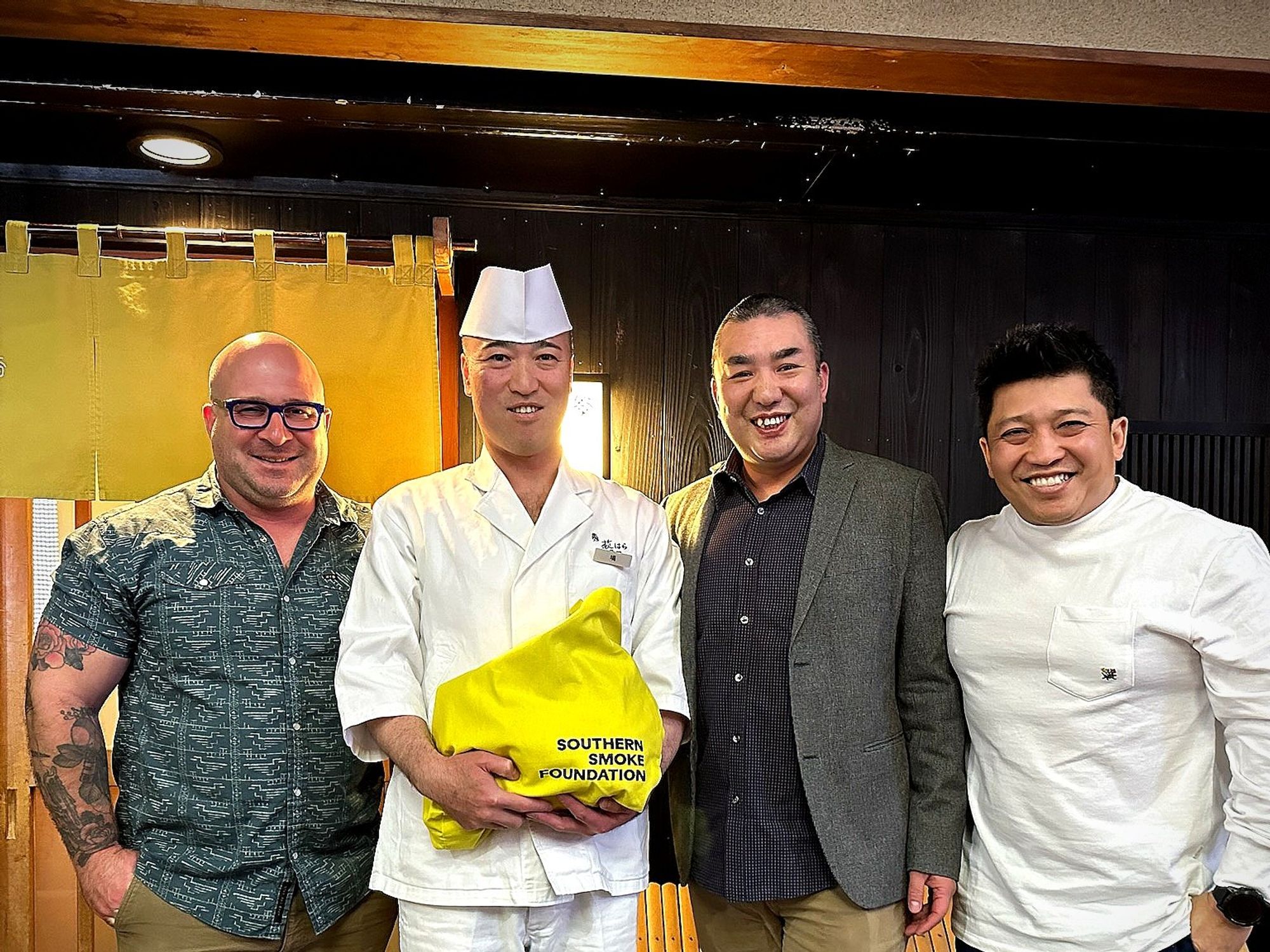
(left to right) The Katami team — Seth Siegel Gardner, Kata Robata chef Manabu Horiuchi (known as Hori) , and Yun Cheng — met with Hori's mentor Takahito Hanawa in Tokyo.
Among Houston’s most restaurant-obsessed diners, one restaurant that has yet to open this year stands head and shoulders above the rest. Katami, the new Japanese restaurant from Kata Robata chef Manabu Horiuchi (known as Hori) and business partner Yun Cheng has started accepting a limited number of reservations for its soft opening.
Before diving into that restaurant’s menu, design, and other details in an article next week, let’s take a step back and look at some of the people, places, and meals that inspired this eagerly anticipated new arrival.
Earlier this year, chef Hori, consulting chef Seth Siegel Gardner, who worked alongside Hori at Kata Robata before opening The Pass & Provisions, and business partner Yun Cheng traveled to Japan for a research trip.
Due to the pandemic, Hori hadn’t returned to his homeland in more than three years. With Siegel Gardner serving as photographer and Hori acting as a tour guide, the group met with chefs, fishermen, suppliers, sake brewers, and others to get a true sense of the current state of modern Japanese cuisine.

From chef Hori’s perspective, the trip served as a source of inspiration. The only way he could present his vision of modern Japanese cuisine in America was to reconnect with his homeland and taste what Japanese people are eating and drinking now.
The two chefs sat down with CultureMap to discuss what they learned from their travels. Here are some highlights from our lengthy conversation.
In this photo, Hori and Siegel Gardner pose with chef Takahito Hanawa at his restaurant Sushi Hagiwara in Tokyo’s Ginza district. Hori recalls what it was like working there before he moved to America.
Manabu Horiuchi: I went to see my former boss. We used to work together like 30 years ago. He has a restaurant in Ginza. It’s difficult to have restaurant there, because there’s so much competition. Also, rent is so expensive. Only top chefs can go to this area.
Seth Siegel Gardner: This restaurant, this was the first night when we got there. So I mean, we've been up basically for a day and a half at this point, almost. But this restaurant only seats, like, 16 people. It's a sliver of a building.
MH: We used to work together like 30 years ago. We [lived at] the restaurant. So the restaurant is on the first floor, and then on the fourth floor, there is a space for living. For 15 hours we are working in the restaurant and then after we finished we would go up and sleep.
We did that for a long time, four or five years over there. We lived together. We worked together. We cried together. We drank together, too.
SSG: I remember coming to this store to buy little tools that we needed that day like mandolins or graters or something like that. [Hori said] This is the same store that I would come to. Some of the only times he got out of the restaurant were to go shopping for the restaurant.
MH: He has a restaurant in Ginza 50 years, which is doing great. It's very hard to be open for 50 years in Ginza.
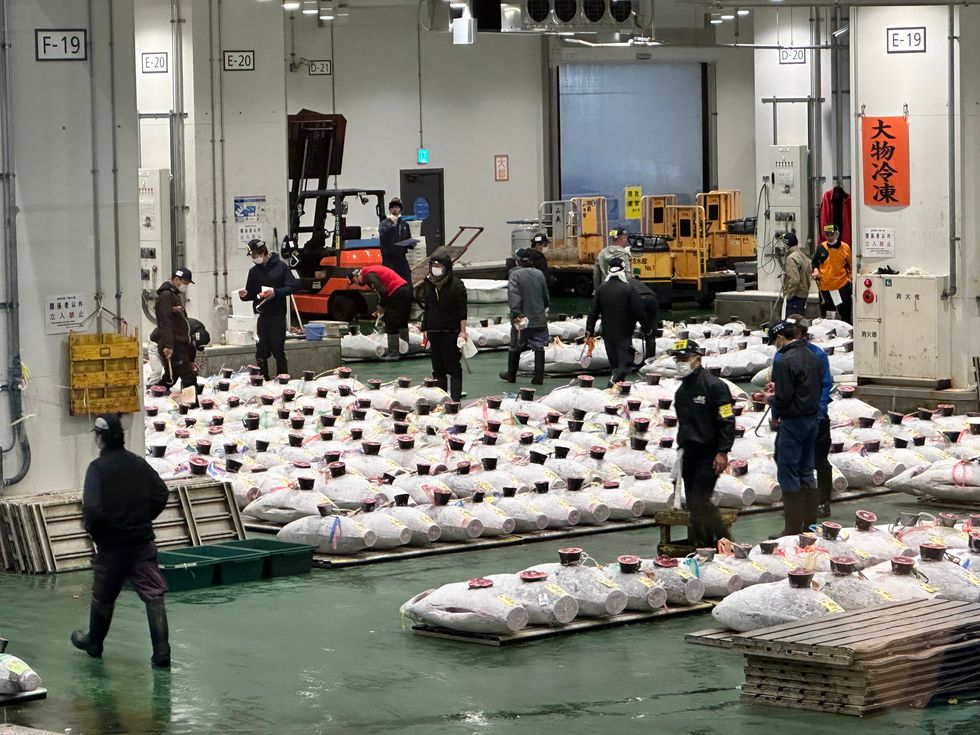
This photo shows the tuna auction at the Toyosu seafood market. Chef Hori is in daily correspondence with a fish buyer who chooses the seafood that will be flown to Houston for use at Kata Robata and Katami. When everything is running smoothly, it only takes 20 hours to get from the market to Houston.
MH: This person picks my fish. We are texting all the time. We take what is good.
He's there at midnight.
SSG: We got to the market that day. It was about 4:30 am, I think. And they were like, oh, you're kind of late. Everything's almost over. All the auctions are ending.
They had these hats, you only get a certain amount of them. They had some for us to wear, so we could go everywhere. But almost nobody really gets to do that.
MH: Toyosu is the main fish market. No one can get in. It’s only for the professional people.
SSG: Tuna was the only auction we couldn't really get close to. There's a kind of perch where you can watch. Because this area has millions of dollars of tuna. I mean there could be $20 or $30 million just in tuna business going through in one day.
He said that his company is one of the best companies at the market. He said there's probably about five of those. And then there's probably like a hundred companies underneath them. I think he said just his company does over a hundred million dollars a year.
They can, as long as everything goes as planned, — and the biggest hurdle is the same thing that UPS deals with, the last mile — we can get fish from the market to our door in 16 hours.
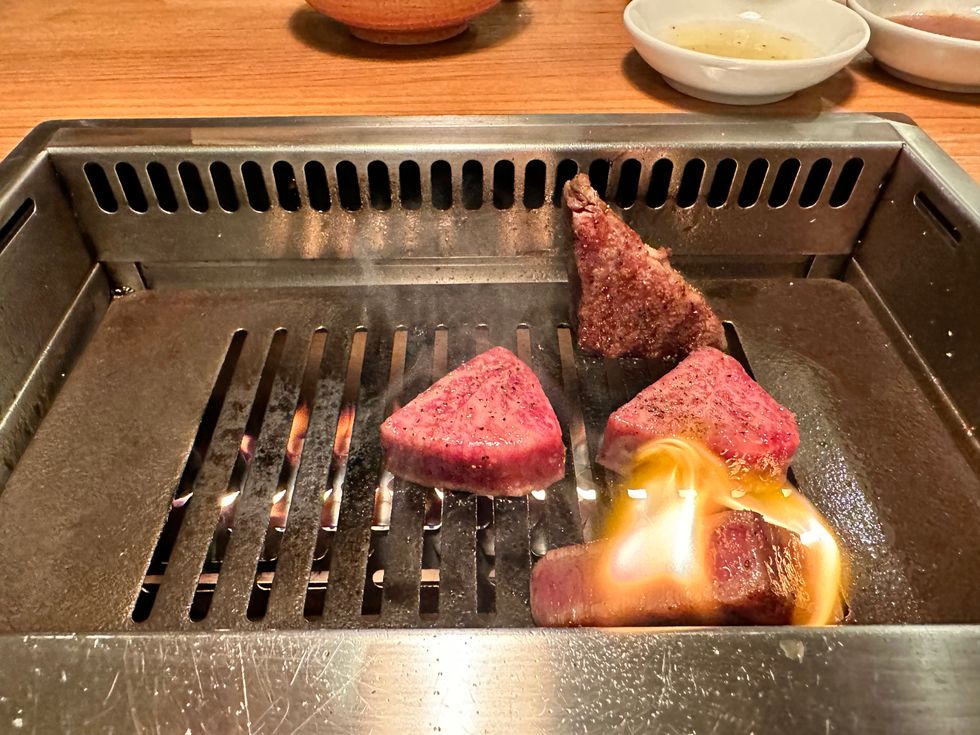
This photo shows wagyu beef cooking on a grill. Katami will serve five preparations of wagyu — robata, tataki, shabu shabu, carpaccio, and yakiniku. Diners will be able to pair them with an extensive selection of highball cocktails. The next photo shows the canned highballs that are readily available throughout Japan
SSG: This is a Japanese barbecue that we went to. It [served] courses of Wagyu throughout the whole meal. So, wagyu sushi, then different cuts — tongue, all that kind of stuff.
The idea is doing something where you could order a flight of wagyu. Like, a wagyu progression.
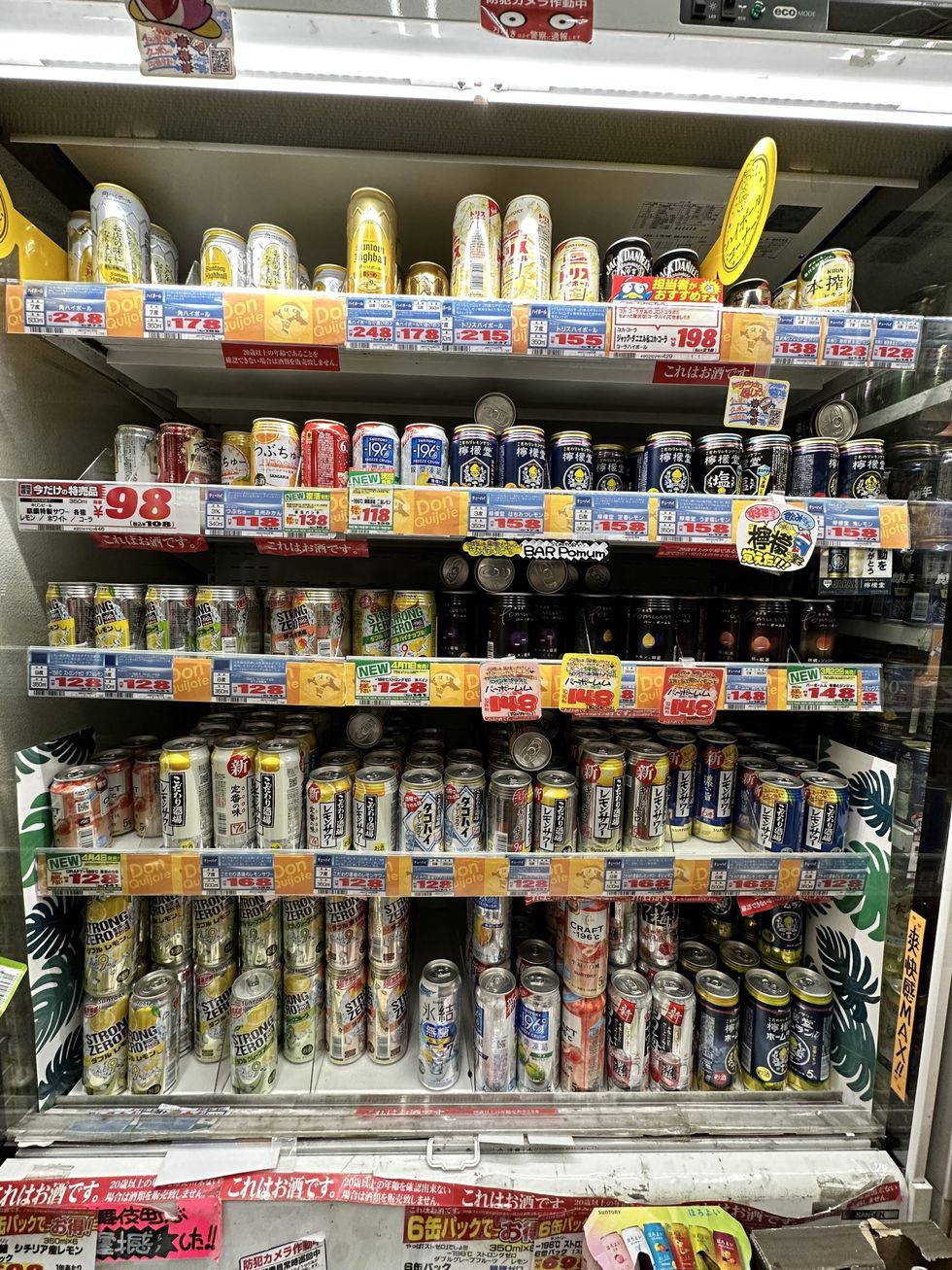
Everywhere we were going, everyone's drinking highballs all the time. After our breakfast of beef and uni, we went and got a bunch of highballs. We were talking about this idea. It would be really cool if y'all expanded on the highball program that you're already doing.
I didn't even think about it, because there's so many different flavors that you're having while you're there — a sour high balls, salted plum high balls, all these different kinds.
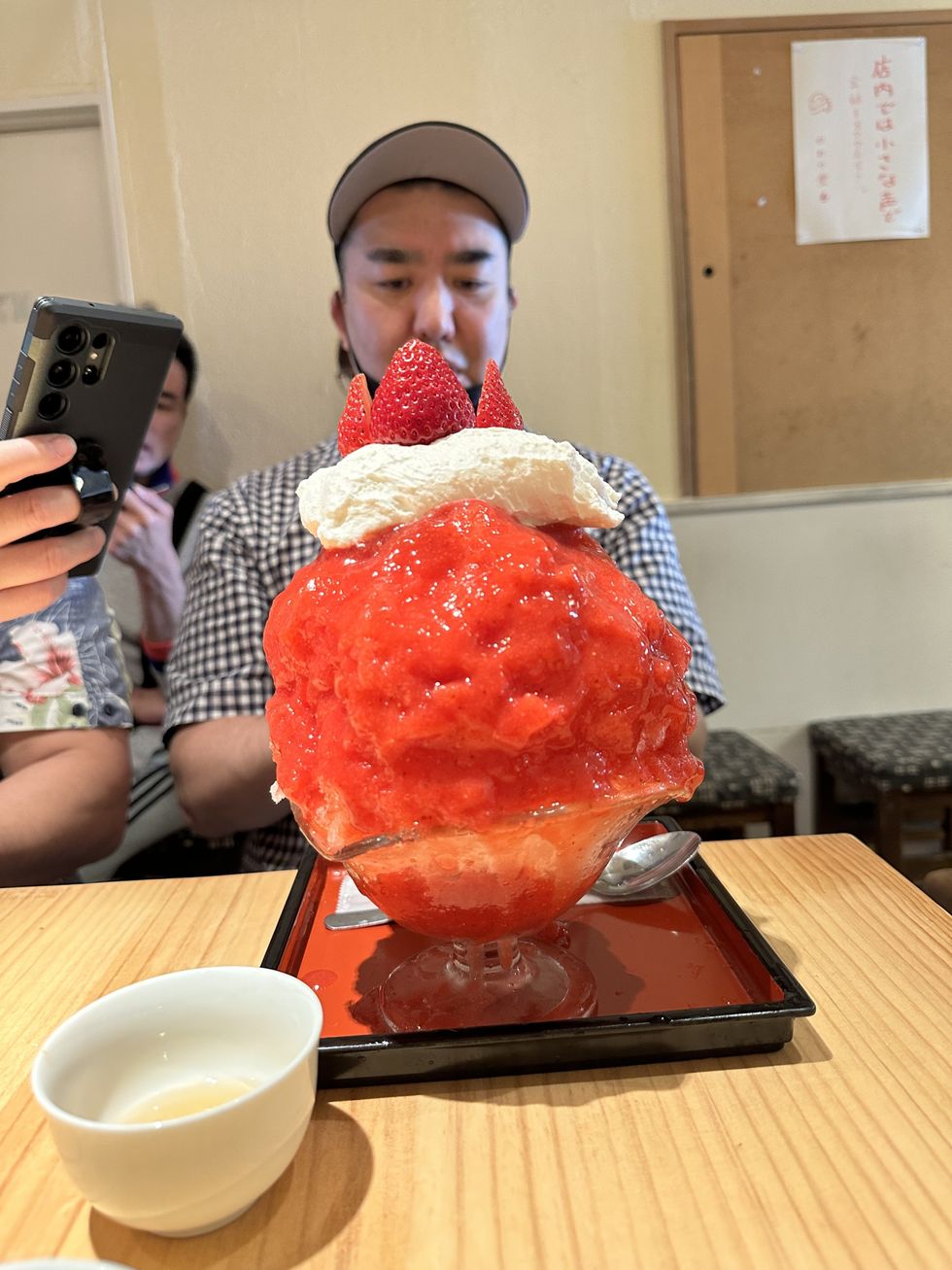
Anyone who’s been to Kata Robata over the past few months has seen its kakigori dessert, the shaved ice treat that’s made with ice that’s imported from Japan. Katami will also offer it as a dessert option. Hori took Siegel Gardner to one of his favorite kakigori shops where they stood in line for an hour to sample its wares.
MH: This is a Japanese-style shaved ice. Originally, Japanese shaved ice is super, super fluffy. Our ice is from Japan. Over here, there’s hard water. Japan has soft water that tastes so much better. Also, Japan has some of the best, cleanest water in the world.
SSG: You travel with Hori you'll learn that Japan has the best everything [laugh].
MH: We're going to bring in actual Japanese ice for cocktails and for this dessert.
SSG: It's almost creamy with how fluffy it is. It's amazing what the ice and the texture do to your palette and make you think you're having this really rich dessert. But obviously it has a very clean flavor to it. It’s shocking. All the flavors we had were super interesting.
It was great. This is Hori’s favorite place for shaved ice. It's tiny and you could tell the people that knew the deal — you go in and get your shaved ice, you eat it as fast as humanly possible.
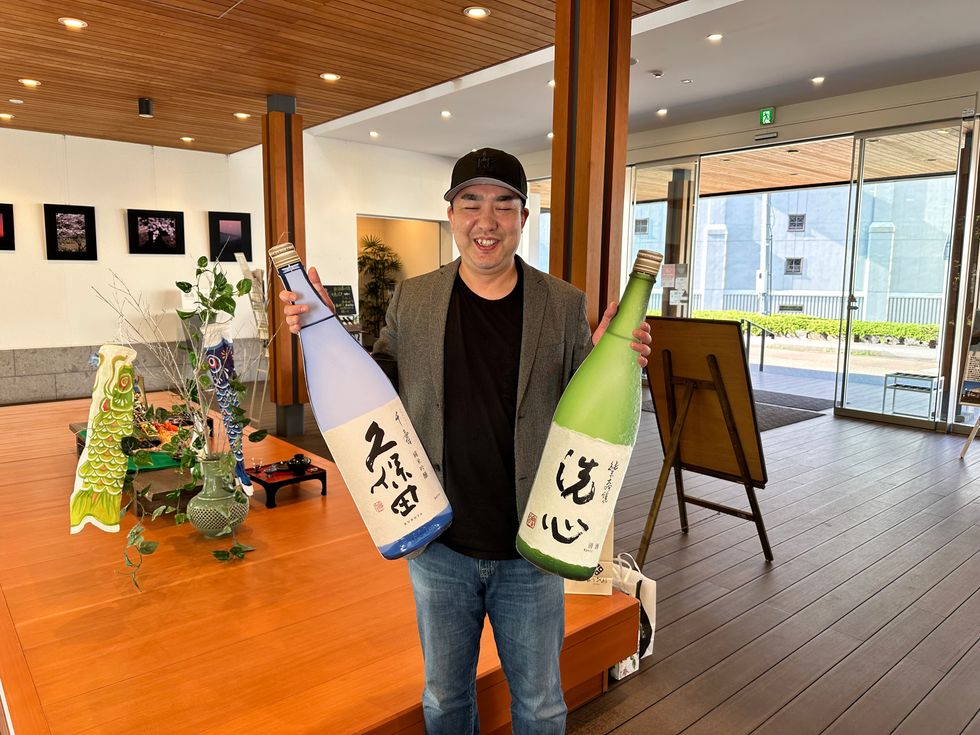
The two chefs also traveled to the Asahi Shuzo Nigata Sake Brewery to sample Kubota sake. The brewery is located in the Nigata region, which Hori says is known for having the best rice and water for making sake.
MH: Their company was making the best sake 30 years ago. And even 30 years later, it’s still one of the best sake breweries, but they don't do the mass production. Even though they became famous, they're doing quality control. That’s what we want to do at Katami. We don't want to do mass production. We want to have quality control.
It's super creamy.
SSG: A lot of stuff doesn't come to America. We’ll have allocated sake just for Katami.
They were super, amazingly friendly. Of course, Hori is a big supporter of theirs and sells a lot of their sake. This is like one of the only places we were allowed to take pictures while we were in there.
Very old school, all natural fermentation, beautiful facilities. It's this massive compound, because you need these huge tanks. It was a beautiful space. And then they had a big tasting room area.

At the train station, it's extremely soy focused because that's just what they're known for in that area. There's this cool little area where it was all coin operated. You get a little cup and you get tokens and then you just throw your cup under there, and you can try hundreds of different sakes from that area.
This little bar was just filled with businessman waiting for their trains. You know exactly when the trains arrive to the second. So you can be, like, well, I've got time for three more sakes and then I need to like get to the train.
Each cup was maybe like two bucks or something. You pay 10 bucks and you got three tokens. And then of course if you wanted to try the nicer ones, they cost more tokens.
CultureMap: What were your biggest takeaways from this trip?
SSG: I think for me it was, one, just the culture in general. Not even just the food and beverage culture, but the way that everyone there was to each other, to guests. It was a level of respect that was like nothing I'd ever seen.
Two, when you think about the food, think about really wanting kind of what Hori’s talking about, like paying respect to the ingredients a little bit more and not being as — still want to be whimsical and have fun with things — but also like really drill down on some of the ingredients that are going into stuff. That comes across as we spent the time to source these things. There's a lot of thought going into like why they're on the menu, you know, why certain things are only available for lunch versus dinner. So that they do compliment Hori and what he's doing with the fish.
Everyone that's going to eat there is going to be having the best experience ever, because they've already ordered all this fish and all the seafood. It's like the kitchen just really just needs to kind of like come in and like play the encore. Not f— it up.
Hori’s really in the middle of the restaurant now. He's on a stage, and so I think the kitchen is kind of backing him up a little bit.
I thought being there and getting to experience it was amazing. Getting into Hori’s coming up, a little bit of childhood obviously with the shaved ice and all these flavors that he remembers growing up.
MH: I realized what is next for my future. Where do I need to focus? I really like Japan. I keep the traditional way. I expect more like what is the traditional style instead of just new things.
I grew up in Japan, so I definitely bring back traditional flavors into my food. We want serve to that at Katami.
CM: Last question: Is there anything you didn’t eat?
MH: I went to a fancy yakitori restaurant. First course is chicken liver sashimi. I say, I'm sorry, I can't eat it. And then Seth said, of course, no, I don't eat it. [laughs]
SSG: I was like, [laughs] thank god Hori said no!


